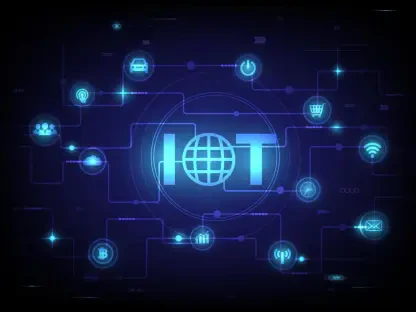Manufacturing is undergoing a transformative phase, characterized by the rapid integration of advanced technologies, which not only revolutionize production processes but also bring new legal risks that companies must manage. As technological advancements proliferate, the manufacturing sector must confront an array of legal challenges tied to data management, intellectual property (IP), regulatory compliance, and capital investment. Navigating these legal intricacies is crucial for companies aiming to leverage these technologies effectively while mitigating potential legal pitfalls.
The Rise of Software-Defined Vehicles
The advent of software-defined vehicles (SDVs) is one of the most significant technological trends in manufacturing. Unlike traditional vehicles, SDVs are controlled by sophisticated software layers that oversee various vehicle components. These layers allow for centralized control systems and modular software updates, leading to enhanced operational efficiency and safety.
However, this technological shift also introduces new legal challenges. For instance, the deployment of over-the-air software updates raises questions about compliance with vehicle safety standards and cybersecurity regulations. Manufacturers must ensure these updates do not inadvertently create vulnerabilities that could be exploited, leading to significant legal liabilities. The regulatory framework for vehicle safety must therefore include guidelines that account for these novel software capabilities, ensuring that updates are managed securely and comprehensively.
Moreover, software-defined vehicles generate vast amounts of data, including driver behavior and vehicle performance. The ownership, privacy, and management of this data become critical issues. Companies must implement robust data protection policies to prevent unauthorized access and comply with stringent data privacy laws. The challenge lies not just in meeting these regulatory requirements but also in maintaining consumer trust. Legal disputes over data breaches and privacy violations could result in hefty penalties and reputational damage, emphasizing the need for comprehensive data governance structures.
Advancements in Energy Storage and Electrification
Energy storage and electrification are key components of the modern manufacturing landscape. Innovations in battery technologies, such as solid-state and advanced lithium-ion batteries, have vastly improved energy density, safety, and lifecycle management. This shift supports the growing demand for electric vehicles (EVs) and sustainable energy solutions, presenting both opportunities and legal challenges.
Legal risks in this area primarily revolve around battery lifecycle and recycling. Manufacturers must navigate complex regulations concerning the disposal and recycling of batteries. Non-compliance could result in hefty fines and damage to the company’s reputation. Additionally, the expansion of EV charging infrastructure requires adherence to local building codes and safety standards, further complicating legal compliance. Companies must develop rigorous processes to meet these requirements, ensuring that both environmental impact and regulatory compliance are addressed in tandem.
The capital-intensive nature of these technologies presents another layer of risk. Companies need to plan and manage significant financial investments carefully, often involving government grants and incentives. Legal oversight is crucial to ensure compliance with financial reporting and grant requirements, which can significantly impact a company’s bottom line. Engaging in these large-scale projects necessitates the establishment of robust risk management strategies, allowing companies to identify potential legal and financial pitfalls early in the process. Proactive legal planning can mitigate risks and maximize the benefits from these transformative technologies.
Ubiquity of Sensors and Data Proliferation
The increasing use of sensors in manufacturing is another trend reshaping the industry. Sensors are now integral to monitoring components, enabling computer vision, and enhancing perception functions in various applications, including automotive and industrial environments. The rise of these sensors brings about unprecedented levels of data generation, which can be both a boon and a bane for manufacturers.
Despite the technological benefits, the proliferation of sensors raises several legal concerns. The data generated by these sensors must be securely managed to protect against breaches and misuse. Manufacturers need comprehensive data governance strategies to align with regulatory requirements and mitigate risks associated with data breaches and privacy violations. Implementing robust cybersecurity measures is crucial to protect sensitive data from unauthorized access and manipulation, and adherence to regulatory frameworks like the General Data Protection Regulation (GDPR) is non-negotiable.
Intellectual property (IP) protection is another significant issue, as the development of sensor technology often involves collaboration with third parties. Companies must navigate complex IP landscapes to safeguard their innovations and avoid disputes over patent infringements or trade secrets. Legal agreements with collaborators and suppliers need to be meticulous, ensuring clear definitions of IP ownership and the scope of use rights. Failure to adequately protect IP can result in costly legal battles and loss of competitive advantage, emphasizing the importance of robust IP management strategies in sensor technology development.
Space and Integration Challenges
As electronic components become more prevalent in manufacturing, integrating these devices into existing systems poses several challenges. The need to address size, weight, and power requirements without overhauling manufacturing processes necessitates innovative solutions that complicate the legal landscape. Ensuring that new components seamlessly fit into existing production lines requires both technical ingenuity and careful legal planning.
Legal risks in this context include ensuring compliance with safety and performance standards for new components. Manufacturers must also manage contracts with suppliers and partners to define clear terms for component integration and performance expectations. Failure to do so can result in disputes and potential legal actions. Legal agreements must explicitly state the responsibilities and expectations of all parties involved, mitigating the risk of contract breaches and ensuring smooth supply chain operations.
Furthermore, the increased complexity of manufacturing ecosystems means that companies must be vigilant about potential supply chain disruptions. Legal strategies must encompass risk management frameworks to mitigate these disruptions and maintain seamless production processes. This involves ensuring the reliability and accountability of suppliers through strict contractual obligations and regular audits. Proactively managing supply chain risks can prevent delays and legal complications, ensuring continuous and efficient manufacturing operations.
Flexible Software Platforms
Modern manufacturing relies heavily on flexible software platforms capable of integrating diverse sensors and data sources. These platforms are crucial for ensuring robust and secure architectures that can handle multiple safety-related applications simultaneously. As the reliance on these software platforms grows, so do the attendant legal implications.
The legal implications of deploying such platforms are substantial. Companies must ensure these platforms meet industry standards and regulatory requirements for safety and cybersecurity. Any lapses can lead to significant legal repercussions, including fines and mandatory recalls. Ensuring compliance requires a thorough understanding of relevant regulations and rigorous testing protocols to validate software performance and security.
Moreover, software platforms often require ongoing updates and maintenance. Manufacturers must establish clear contractual terms with software vendors to manage these updates and ensure compliance with legal standards throughout the product lifecycle. These contracts should detail responsibilities for security patches, system upgrades, and regular maintenance to protect against vulnerabilities and regulatory non-compliance. Effective legal oversight in these agreements is essential to safeguard the integrity and reliability of software platforms in modern manufacturing environments.
Mitigating Risks in Capital-Intensive Projects
The development and deployment of large-scale manufacturing technologies, particularly in electrification projects, are capital-intensive and fraught with risks. These projects often involve significant upfront investments with long-term returns, making legal risk management essential. Companies embarking on these ventures must navigate a myriad of legal and financial challenges to ensure project success.
Companies must adopt comprehensive risk mitigation strategies, starting with smaller-scale deployments to identify and address potential issues early. Legal oversight is crucial in these phases to ensure compliance with industry standards and regulatory requirements. This proactive approach can significantly reduce the financial and legal risks associated with large-scale technology deployments. Conducting thorough legal analyses and pilot testing can help uncover potential regulatory hurdles and operational challenges before full-scale implementation.
Additionally, managing the financial aspects of these projects requires careful planning and compliance with financial reporting standards. Legal teams must ensure all financial transactions and grant reports adhere to regulatory requirements, minimizing the risk of financial penalties and legal disputes. Effective financial governance and transparency are necessary to secure investor confidence and governmental support, which are critical for the success of capital-intensive projects. Fostering strong legal and financial stewardship can pave the way for sustainable growth and innovation in the manufacturing sector.
Ecosystem Collaboration and Legal Boundaries
Manufacturing is going through a significant transformation as advanced technologies become increasingly integrated into production processes. These innovations are not only changing how manufacturers operate but are also introducing new legal risks that need to be managed. As technology evolves, companies in the manufacturing sector face various legal challenges, particularly concerning data management, intellectual property (IP), regulatory compliance, and capital investment.
Data management has become a critical area of concern as manufacturers collect and analyze vast amounts of data to optimize production and enhance efficiency. Safeguarding this data to avoid breaches and misuse is essential, given the rising incidence of cyber threats. Protecting intellectual property is another major issue, as companies develop new technologies and methods that must be safeguarded from potential infringement.
Regulatory compliance adds another layer of complexity as manufacturers navigate an ever-changing legislative landscape. They must ensure that their operations meet all relevant laws and regulations, which often involves adapting to new standards and protocols. Lastly, securing capital investment for adopting advanced technologies can present its own challenges, as the cost of innovation is high but necessary for staying competitive.
Successfully managing these legal intricacies is crucial. Companies must be proactive in understanding and addressing these challenges to leverage new technologies effectively while minimizing potential legal pitfalls.









